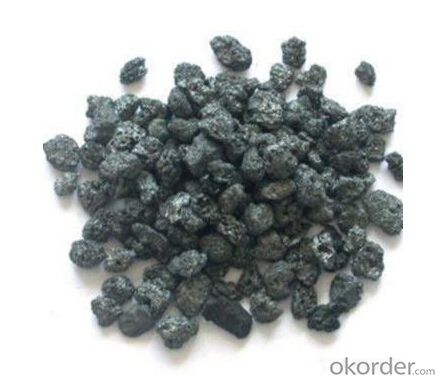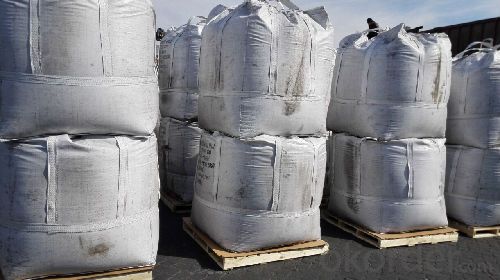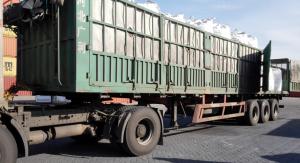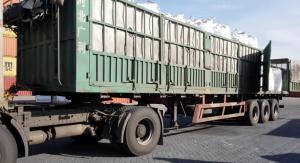Calcined Petroleum Coke Natural Chemical Powder
- Loading Port:
- Tianjin
- Payment Terms:
- TT or LC
- Min Order Qty:
- 20 m.t.
- Supply Capability:
- 1500 m.t./month
OKorder Service Pledge
OKorder Financial Service
You Might Also Like
Quick Details
Place of Origin: China (Mainland)
Application: carben additives
Dimensions: fix carben morethan98%,sulphur less5%
Chemical Composition: nature graphite powder
attribute: briquette grade
shape: <SPAN style="BORDER-BOTTOM: 0px; BORDER-LEFT: 0px; PADDING-BOTTOM: 0px; MARGIN: 0px; PADDING-LEFT: 0px; PADDING-RIGHT: 0px; FONT-FAMILY: inherit; WORD-WRAP: break-word; VERTICAL-ALIGN: baseline; BORDER-TOP: 0px; BORDER-RIGHT: 0px; PADDING-TOP: 0px" class=attr-value title=block/powder>block/powder
classify: carbon additives/petroleum coke
Packaging & Delivery
| Packaging Details: | 50kg/bag,25kg/bag or as customer requirement |
|---|---|
| Delivery Detail: | 20DAYS after payment |
Specifications
Calcined Petroleum Coke Natural Chemical Powder
Petroleum coke products can be divided into needle coke, sponge coke, projectile coke and coke breeze four kinds.
Calcined Petroleum Coke
F.C.: 98.5%MIN
ASH: 0.8% MAX
V.M.: 0.7%MAX
S:0.5%MAX
Moisture: 0.5%MAX
Structure
Calcined Petroleum Coke Natural Chemical Powder
Shape: granule
- Dimensions: 0-1mm, 1-5mm, 1-6mm, 2-8mm, etc
- Product Type: Carbon Additive
- C Content (%): 98-99.5% MIN
- Working Temperature: -
- S Content (%): 0.5%-0.7%MAX
- Ash Content (%): 0.7%MAX
- Volatile:0.8%MAX
- Moisture: 0.5% MAX
- ADVANTAGE: low ash & sulfur
- COLOR: Black
Feature
Calcined Petroleum Coke Natural Chemical Powder
Physics and chemistry performance:
Unit | Index | |||||
No.1 | No.2 | No.3 |
| |||
Density | g/cm3 | 2.04 | 2.00 | 2.00 | ||
sulphur content | %≤ | 0.5 | 1.0 | 2.5 | ||
volatility | %≤ | 0.5 | 0.5 | 0.5 | ||
ash content | %≤ | 0.5 | 0.5 | 0.5 | ||
moisture | %≤ | 0.3 | 0.5 | 0.5 | ||
charcoal | %≤ | 98.5 | 98.0 | 98.0 | ||
Image
Calcined Petroleum Coke Natural Chemical Powder


FAQ:
Calcined Petroleum Coke Natural Chemical Powder
How to classify calcined petroleum coke?
1) According to difference of sulfur content, can be divided into high sulfur coke (sulfur content more than 4%), sulphur in coke sulfur content (2% 4%) and low sulfur coke (sulfur content below 2%).
2) Petroleum coke products can be divided into needle coke, sponge coke, projectile coke and coke breeze four kinds:
3) Needle coke, has obvious needle-like structure and fiber texture, mainly used for steel-making in high power and ultra-high power graphite electrode. As a result of needle coke in sulfur content, ash content, volatile matter and true density and so on have strict quality requirements, so the production process of needle coke and raw materials have special requirements.
4) The sponge coke, high chemical reactivity, low content of impurities, mainly used in the aluminum industry and carbon industry.
5) Focal or spherical coke: the projectile shape is round, diameter 0.6-30 mm, usually from the production of high sulphur, high asphaltic residual oil, can only be used as industrial fuel power generation, cement etc.
6) Coke breeze: fluidized coking process, the fine particles (0.1- 0.4 mm) in diameter, high volatile, high expansion coefficient, cannot be directly used for electrode preparation and carbon industry.
Advantage:
Calcined Petroleum Coke Natural Chemical Powder
1. High quality and competitive price.
2. Timely delivery.
3. If any item you like. Please contact us.
Your sincere inquiries are typically answered within 24 hours.
- Q:What are the impacts of carbon emissions on the stability of polar ice caps?
- Carbon emissions have significant impacts on the stability of polar ice caps. The increased concentration of carbon dioxide in the atmosphere, primarily due to human activities, leads to global warming. This rise in temperature causes the polar ice caps to melt at an accelerated rate. As a result, the ice caps shrink, leading to rising sea levels and increased coastal flooding. The loss of ice also disrupts ecosystems and threatens the survival of various species, such as polar bears and seals, which depend on the ice for their habitat and food sources. Overall, carbon emissions play a major role in destabilizing the polar ice caps and pose grave consequences for both the environment and human populations.
- Q:Is carbon a conductor?
- Carbon is an element, not an organization, and when the carbon atoms are arranged in different spatial forms, the physical and chemical properties of the substances formed are different. When the formation of lamellar material carbon atom with six ring as a unit, the material is a conductor, which is familiar to us when graphite, carbon atoms to form a tetrahedral structure, which is macroscopically when diamond is an insulator. There are many forms of carbon elements, which are not listed in one by one
- Q:What are the properties of carbon-based ceramics?
- Carbon-based ceramics have a unique combination of properties that make them highly desirable materials. They exhibit excellent high-temperature stability, exceptional chemical resistance, and high mechanical strength. Additionally, they have low density, low thermal expansion, and good electrical conductivity. These properties make carbon-based ceramics suitable for a wide range of applications, including in aerospace, automotive, and electronics industries.
- Q:How does carbon contribute to the color of gemstones?
- Gemstone color is influenced by carbon, a vital element. Carbon's presence in a gemstone's crystal lattice structure allows it to absorb specific light wavelengths and reflect others, resulting in its distinct color. The arrangement of carbon atoms within the gemstone's structure can excite electrons, leading to the absorption of certain colors of light. This absorption process determines the gemstone's color, as the remaining wavelengths are reflected back to our eyes. For instance, diamonds can exhibit color variations, ranging from colorless to yellow or even fancy shades like blue or pink, due to the presence of nitrogen impurities. Similarly, in gemstones like rubies and sapphires, traces of carbon produce a spectrum of colors, spanning from red to blue, depending on the concentration and arrangement of these carbon impurities. Thus, carbon plays a vital role in the color and visual appeal of diverse gemstones.
- Q:What are the properties of carbon nanotubes?
- Carbon nanotubes are a unique form of carbon with exceptional properties. They are incredibly strong and have a high tensile strength, making them stronger than steel but much lighter. They also have excellent thermal and electrical conductivity, allowing for efficient heat dissipation and electrical conduction. Carbon nanotubes possess a large surface area, enabling them to be used for various applications such as energy storage, water filtration, and drug delivery systems. Additionally, they exhibit remarkable flexibility and can be manipulated into different shapes and structures, making them highly versatile in nanotechnology and materials science.
- Q:Why is carbon content of stainless steel low?
- [stainless steel contains low carbon content] stainless steel contains very high Cr. Cr and carbon combine to form carbides, Cr23C6 or Cr7C3, which contain very high Cr. That is, the formation of these carbides is at the expense of a large amount of Cr. It is conceivable that once the content of Cr in the matrix drops a lot, the corrosion resistance will decrease. For austenitic stainless steel, due to the precipitation of Cr carbide, its intergranular corrosion resistance has deteriorated significantly, which is called sensitization.Martensitic stainless steels contain relatively large amounts of carbon.
- Q:How does carbon dioxide affect the Earth's climate?
- The Earth's climate is significantly affected by carbon dioxide (CO2), a greenhouse gas. When released into the atmosphere through natural and human activities like deforestation, burning fossil fuels, and industrial processes, carbon dioxide traps heat from the sun and prevents it from escaping into space. This process is commonly referred to as the greenhouse effect. The accumulation of carbon dioxide in the atmosphere leads to a rise in global temperatures, resulting in climate change. As CO2 levels increase, more heat gets trapped, causing the Earth's average temperature to rise over time. This phenomenon is known as global warming. The consequences of increased carbon dioxide levels and subsequent climate change are extensive. Rising temperatures cause glaciers and polar ice caps to melt, contributing to a rise in sea levels. This can lead to coastal flooding, displacement of communities, and loss of biodiversity. Moreover, altered weather patterns, including more frequent and intense heatwaves, droughts, and extreme weather events like hurricanes and storms, are also associated with increased carbon dioxide levels. These events can have devastating impacts on ecosystems, agriculture, and human settlements. Furthermore, elevated CO2 levels also impact the chemistry of the oceans, making them more acidic through a process called ocean acidification. This poses a threat to marine life, especially organisms with calcium carbonate shells, such as corals and shellfish. To mitigate the impacts of carbon dioxide on the Earth's climate, it is crucial to reduce greenhouse gas emissions. This can be accomplished by transitioning to renewable energy sources, improving energy efficiency, promoting sustainable land use practices, and adopting cleaner technologies. Additionally, initiatives like afforestation and reforestation can help absorb CO2 from the atmosphere, acting as carbon sinks. Taking action to address the issue of carbon dioxide and its impact on the Earth's climate is vital to protect the planet's ecosystems, biodiversity, and human societies. By reducing carbon emissions, we can lessen the effects of climate change and work towards a more sustainable future.
- Q:What are the impacts of carbon emissions on the stability of mangroves?
- Carbon emissions have significant impacts on the stability of mangroves. Increased carbon dioxide levels in the atmosphere contribute to global warming and subsequent sea level rise, which directly affects mangrove ecosystems. Rising sea levels reduce the ability of mangroves to absorb wave energy and protect coastlines, making them more vulnerable to erosion and storm damage. Additionally, higher carbon dioxide concentrations can impair the growth and development of mangroves, potentially leading to reduced biomass and overall ecosystem productivity. Therefore, carbon emissions pose a threat to the stability and resilience of mangrove ecosystems.
- Q:What is the carbon content of 45# steel?
- The carbon content of 45# steel is about 0.42~0.50%. 45 steel is the term "GB", also called "oil steel"". Hot spot in the market; cold rolled gauge 1.0~4.0mm.
- Q:What is carbon neutral agriculture?
- Carbon neutral agriculture refers to a farming practice that aims to balance the amount of carbon released into the atmosphere with the amount of carbon sequestered or removed from the atmosphere. It involves adopting sustainable and environmentally friendly practices that minimize greenhouse gas emissions and promote the absorption of carbon dioxide from the atmosphere. There are several key practices involved in achieving carbon neutrality in agriculture. One of them is reducing fossil fuel usage by employing renewable energy sources, such as solar or wind power, for farm operations. This helps to decrease emissions associated with machinery, equipment, and transportation. Another important aspect is managing soil health and enhancing carbon sequestration. This can be achieved through practices like cover cropping, crop rotation, and conservation tillage. These methods help to increase organic matter in the soil, which in turn contributes to carbon storage. Additionally, carbon neutral agriculture encourages the use of organic fertilizers and natural pest control methods, reducing the need for synthetic chemicals that can emit harmful greenhouse gases. Offsetting carbon emissions is another strategy employed in carbon neutral agriculture. This can involve planting trees on the farm or in nearby areas to absorb carbon dioxide from the atmosphere. It can also include participating in carbon credit programs, where farmers receive compensation for implementing sustainable practices that reduce emissions. Overall, carbon neutral agriculture is a holistic approach that aims to minimize the carbon footprint of farming operations. By reducing emissions and maximizing carbon sequestration, it helps to mitigate climate change and promote a more sustainable agricultural system.
1. Manufacturer Overview |
|
|---|---|
| Location | |
| Year Established | |
| Annual Output Value | |
| Main Markets | |
| Company Certifications | |
2. Manufacturer Certificates |
|
|---|---|
| a) Certification Name | |
| Range | |
| Reference | |
| Validity Period | |
3. Manufacturer Capability |
|
|---|---|
| a)Trade Capacity | |
| Nearest Port | |
| Export Percentage | |
| No.of Employees in Trade Department | |
| Language Spoken: | |
| b)Factory Information | |
| Factory Size: | |
| No. of Production Lines | |
| Contract Manufacturing | |
| Product Price Range | |
Send your message to us
Calcined Petroleum Coke Natural Chemical Powder
- Loading Port:
- Tianjin
- Payment Terms:
- TT or LC
- Min Order Qty:
- 20 m.t.
- Supply Capability:
- 1500 m.t./month
OKorder Service Pledge
OKorder Financial Service
Similar products
New products
Hot products
Related keywords






























